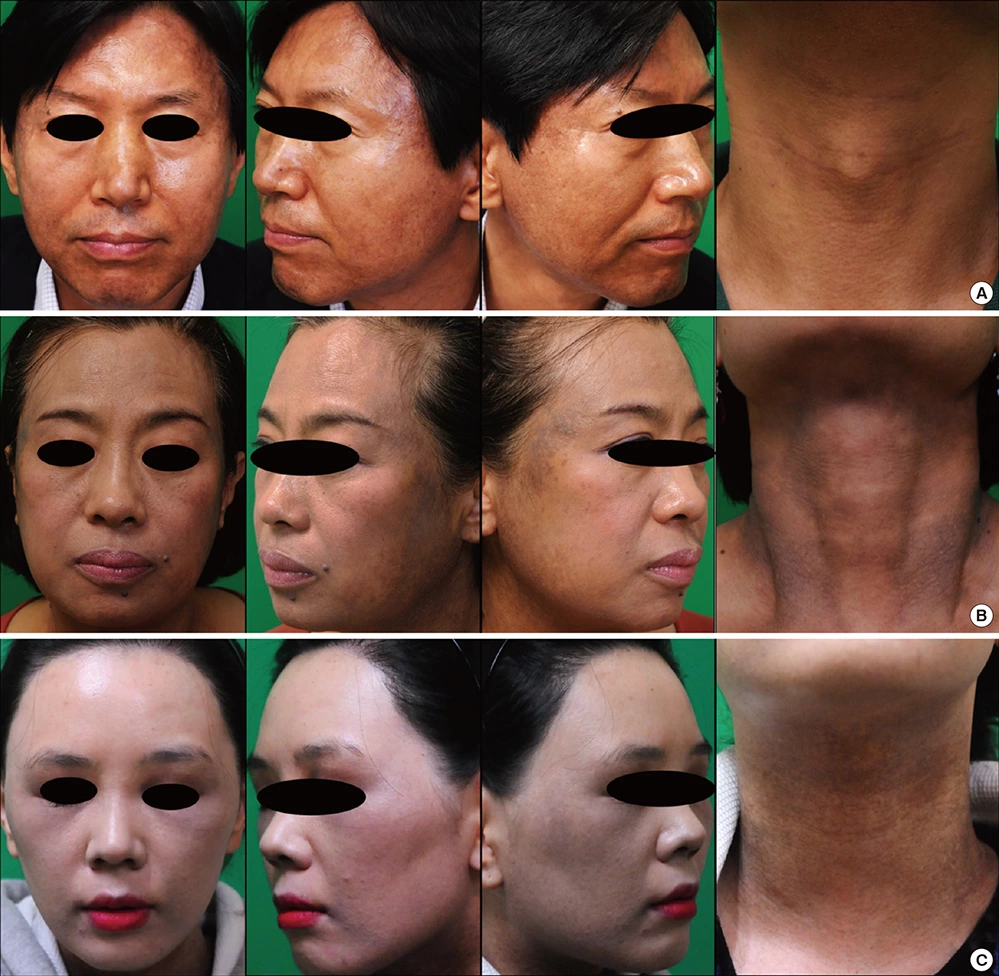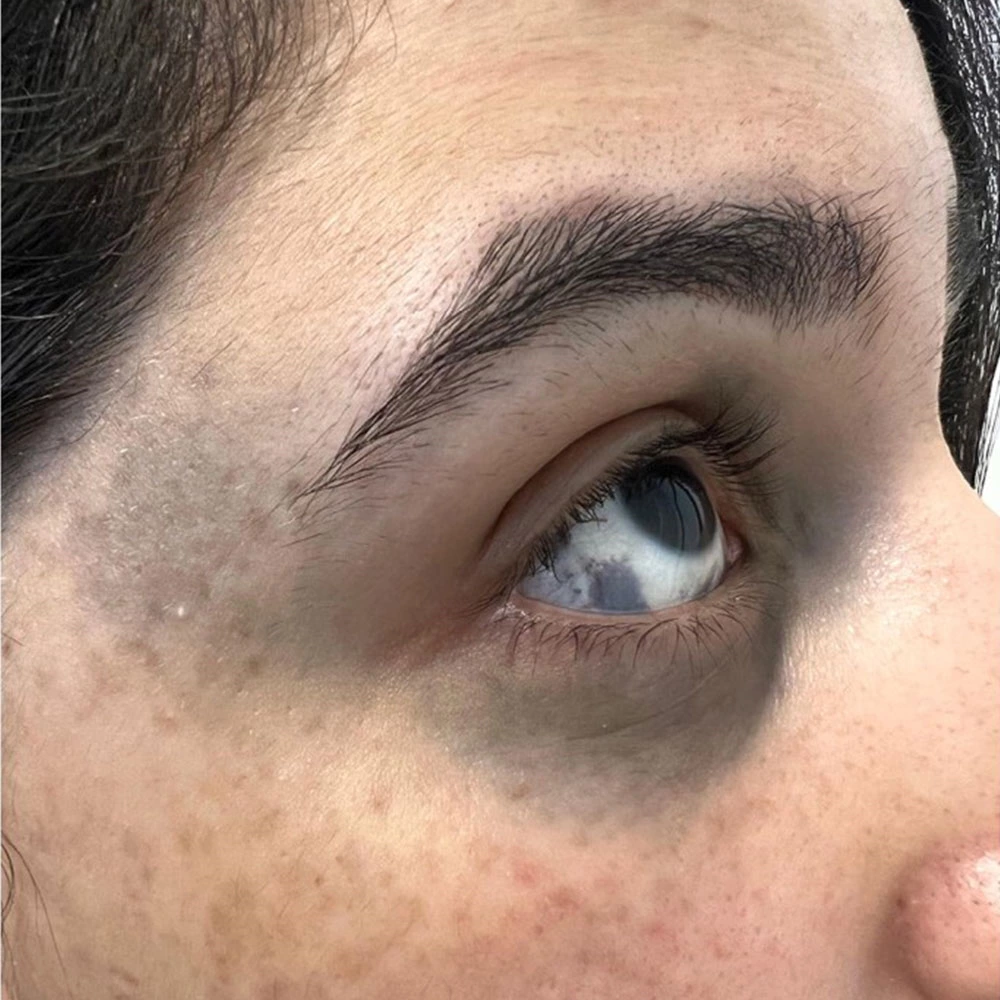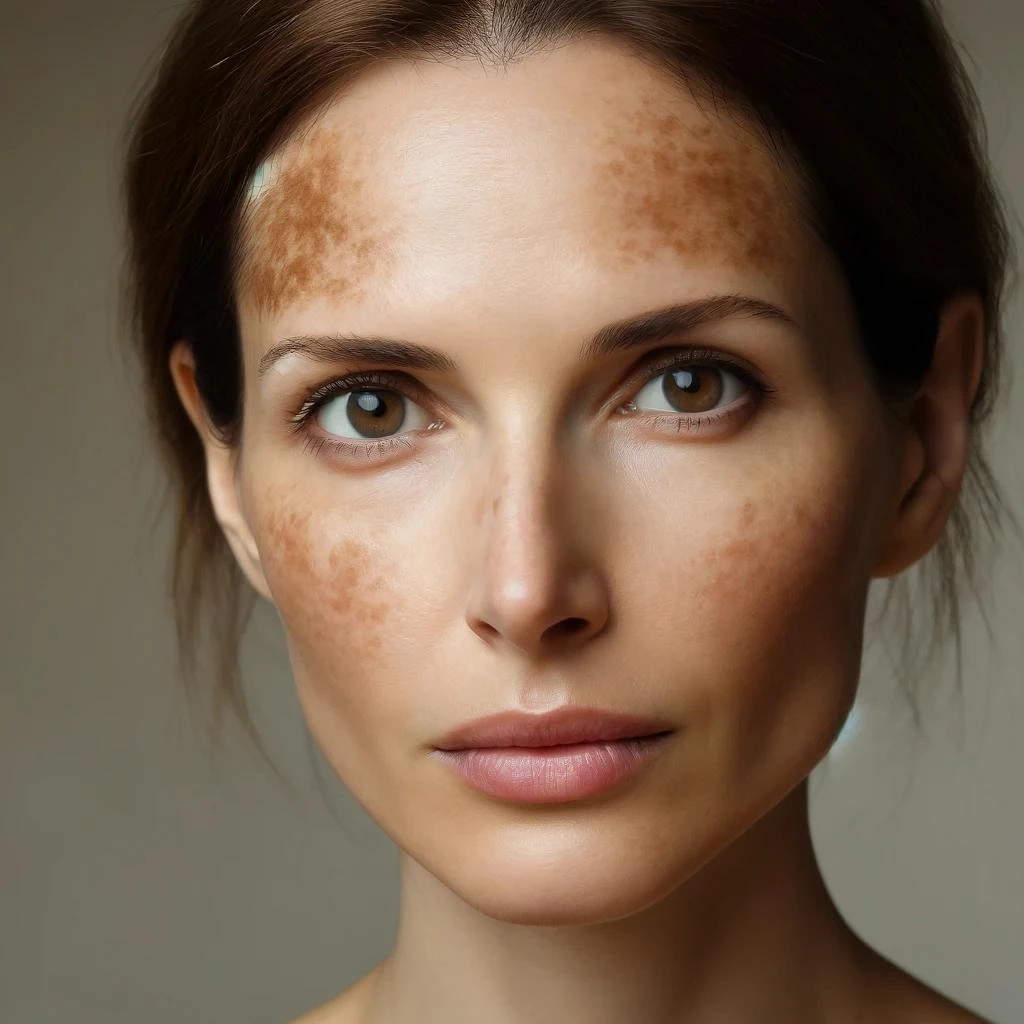
Skin pigmentation refers to the coloring of the skin, which is primarily determined by the amount and type of melanin produced by melanocytes. While pigmentation itself is a normal part of human skin’s appearance, irregular pigmentation can be a source of cosmetic concern and may occasionally signal underlying health issues.
Hyperpigmentation is a condition where certain spots of the skin become darker than the surrounding areas. Common forms include melasma, age spots, and post-inflammatory hyperpigmentation.
In contrast, hypopigmentation occurs when patches of skin become lighter than the normal surrounding skin. This can be due to conditions such as vitiligo or albinism.
UV radiation is the most common external cause of skin pigmentation changes, leading to conditions like sunspots.
Hormonal changes, particularly due to pregnancy or birth control, can trigger melasma, a form of hyperpigmentation.
Genetic predisposition can play a significant role in how susceptible one is to pigmentation disorders.
As we age, pigment cells can accumulate damage or increase in number, leading to age-related hyperpigmentation.
Topical creams containing ingredients like hydroquinone, kojic acid, or vitamin C can help lighten hyperpigmented areas.
Laser treatments can target melanin deposits effectively, often resulting in improved skin tone.
Chemical peels can remove the outermost layers of the skin, helping to reduce the appearance of pigmentation.
This mechanical exfoliation technique can also help in reducing superficial pigmentation.
Using broad-spectrum sunscreens and wearing protective clothing are essential to prevent UV-induced pigmentation.
Adopting a skincare routine that includes antioxidants and exfoliating agents can help maintain even skin tone.
A balanced diet and adequate hydration are beneficial for maintaining healthy skin.
Emerging treatments like picosecond lasers and advanced chemical formulations are showing promise in treating stubborn pigmentation more effectively and safely.
Managing skin pigmentation involves understanding the underlying causes, choosing appropriate treatments, and taking preventive measures to maintain skin health. With ongoing advancements in dermatological care, individuals have more options than ever for addressing their skin concerns.

Skin atrophy striae, also known as stretch marks, are soft striae caused by skin expansion and associated with the weakening of elastic fibers in the skin. They are often seen in individuals who exper

Hypopigmented scars are not caused by structural or functional defects of primary melanocytes, but are secondary hypopigmented diseases at the site of acquired inflammation. I. Etiology and pathogenes

Vitiligo is a common skin disease that occurs in the skin and mucous membranes and is characterized by local or generalized depigmentation, which mainly affects beauty. I. Etiology and pathogenesis Th

Pigmentation that occurs after acute or chronic inflammation of the skin is called post-inflammatory pigmentation. 1. Etiology and pathogenesis Common causes of post-inflammatory pigmentation include:

Chloasma is a pigmentation spot that occurs frequently on the cheeks and forehead of women of childbearing age. It is generally symmetrically distributed and can exist for a long time or develop chron

Solar lentigo, also known as senile lentigo, refers to a clearly demarcated pigmented skin disease caused by natural or artificial ultraviolet radiation. This disease is prone to occur in sun-exposed

Seborrheic keratosis, also known as senile warts, senile plaques, and basal cell papilloma, is the most common benign skin tumor in clinical practice. It is common in middle-aged and elderly people be

Becker's nevus, also known as pigmented hairy epidermal nevus, mostly occurs after birth, is more common in males, and often appears on the shoulders. Clinically, it presents as a slightly elevated pi

Coffee spots Café-au-lait spots, also known as cafe-au-lait spots, are light brown patches that can be found at birth. The color of coffee spots ranges from light brown to dark brown, but each piece i

Lentigo refers to brown or black spots on the skin or mucous membranes. It can occur at the junction of skin and mucous membranes or on the conjunctiva of the eye. This condition is common, presenting

Freckles are small brown spots primarily scattered on the face. They become more prominent in summer due to strong sunlight. The name "freckles" might come from the scattered brown spots on sparrow eg

Blue nevus is also called benign mesenchymal melanoma, blue nerve nevus, pigment cell tumor, melanin fibroma, benign mesenchymal melanoma or Jadassohn-Tieche blue nevus, etc. It is a benign tumor comp

A pigmented nevus is a benign neoplasm composed of nevus cells, also known as nevus cell nevus, cellular nevus, and melanocytic nevus. This condition is common and almost everyone has it. It can occur

Nevus of Ito was first reported by Ito in 1954, hence the name. Nevus of Ito is a pigmented lesion that occurs in the distribution areas of the posterior supraclavicular nerve and the lateral brachial

Mongolian spots, also known as birthmarks, are congenital dermal melanocytosis. Because babies are born with them, they are also called moles. Histologically, melanocytes can be seen staying deep in t

Cheek Acquired Dermal Melanocytosis is also known as Acquired Nevus of Ota, Acquired Bilateral Nevus of Ota-like Macules, Acquired Facial Dermal Melanocytosis, and Acquired Localized Facial Dermal Mel

Nevus of Ota is also known as brown-green nevus on the palate and melanocytosis in the dermis of the eye. It was first reported by Dr. Ohta in 1938, hence the name "Nevus of Ota". Nevus of Ota is a gr

Developing age spots on your face before 40 can indeed be troubling, especially given the cultural value placed on clear, spot-free skin, as exemplified by the Chinese saying "a fair complexion hides